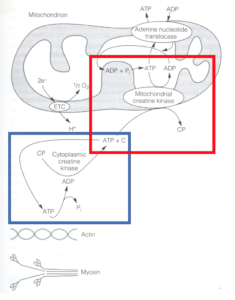Creatine
Applicable sports: Sports with a significant power/strength component
Level of evidence: Strong
Does it work?
Some studies have shown that creatine supplementation can increase intramuscular creatine stores by up to ~30%, but the biggest increases in intramuscular creatine stores usually occur when an athlete has lower intramuscular creatine levels before starting supplementation. With a scientifically-supported supplementation protocol, the typical increase in intramuscular creatine stores will likely lead to greater lean muscle mass, increased max power/strength, and enhanced single or repeated bouts of short-duration high-intensity exercise. The most beneficial performance effects have been observed for exercise bouts of less than 30 seconds.
Actionable advice:
Most research protocols include a loading phase at the start of creatine supplementation (~20 g/day, four 5-g doses per day, for 5-7 days) followed by a maintenance phase (3-5 g per day). Consumption with ~50 g of carbohydrate and protein appears to increase muscle creatine uptake, so consuming creatine with a meal is recommended.
Want to know more?
ATP is the “energy currency” of cellular processes – cells use the energy stored in ATP’s chemical bonds to do work. Without readily available ATP, muscle contraction cannot occur.
Regenerating ATP: the creatine phosphate shuttle

Blue box: At the start of high-intensity exercise, muscular ATP stores are rapidly broken down to produce ADP and inorganic phosphate (P). The breakdown of ATP prompts cytoplasmic creatine kinase to transfer a phosphate group from creatine phosphate (CP) to ADP. This regenerates ATP and produces creatine (C).
Red box: Next, mitochondrial creatine kinase takes a phosphate group from an ATP molecule and converts creatine back to CP. CP is now “recharged” and ready to donate its new phosphate group to a molecule of ADP.
Increasing the amount of creatine stored in muscle (as with creatine supplementation) has been shown to increase the rate of CP synthesis. Faster CP synthesis ideally means that an athlete has a greater ability to regenerate ATP, which is beneficial for short-duration, high-intensity exercise (10) because they have enhanced the capacity of their immediate energy system. This allows athletes to handle a greater overall workload during resistance training or other quick bouts of exercise.
References:
Cooper R. (2012). Creatine supplementation with specific view to exercise/sports performance: an update. Journal of the International Society of Sports Nutrition.
https://www.ncbi.nlm.nih.gov/pubmed/22817979
Greenhaff PL. (1993). Influence of oral creatine supplementation of muscle torque during repeated bouts of maximal voluntary exercise in man. Clinical Science (London).
https://www.ncbi.nlm.nih.gov/pubmed/8504634
Harris RC. (1992). Elevation of creatine in resting and exercised muscle of normal subjects by creatine supplementation. Clinical Science (London).
https://www.ncbi.nlm.nih.gov/pubmed/1327657
Lanhers C. (2017). Creatine Supplementation and Upper Limb Strength Performance: A Systematic Review and Meta-Analysis. Sports Medicine.
https://link.springer.com/article/10.1007%2Fs40279-016-0571-4
Peeling P. (2018). Evidence-Based Supplements for the Enhancement of Athletic Performance. International Journal of Sport Nutrition and Exercise Metabolism.
https://journals.humankinetics.com/doi/full/10.1123/ijsnem.2017-0343
Rawson ES. (2007). Mechanisms of muscular adaptations to creatine supplementation. International Sports Medicine Journal.
Steenge GR. (2000).Protein- and carbohydrate-induced augmentation of whole body creatine retention in humans. Journal of Applied Physiology.